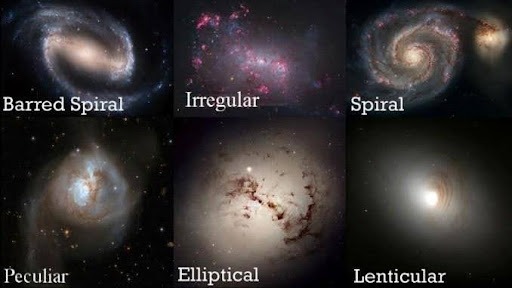Is Our Galaxy Special? The Incredible Classification of Galaxies Revealed!
What Are Galaxies?
Before we delve into the classification of galaxies, let’s clarify what a galaxy actually is. A galaxy is a massive system that consists of stars, star clusters, planets, gas, dust, and dark matter bound together by gravity. Our own home, the Milky Way, is just one of billions of galaxies scattered throughout the universe.
Galaxies can range in size from a few billion stars to hundreds of trillions, and they come in various shapes and sizes. The classification of galaxies helps astronomers categorize these diverse structures based on their appearance and other characteristics.
The Hubble Classification System
One of the most widely accepted methods for classifying galaxies is the Hubble classification system, developed by Edwin Hubble in the 1920s. This system divides galaxies into three primary categories: elliptical, spiral, and irregular. Let’s break these down further.
1. Elliptical Galaxies
Elliptical galaxies are shaped like elongated spheres, resembling a football or an egg. They can range from nearly spherical (classified as E0) to highly elongated (E7). These galaxies typically contain older stars, with very little gas and dust, which means they have minimal star formation activity.
Characteristics of Elliptical Galaxies
- Age: Mostly older stars
- Star Formation: Minimal or none
- Appearance: Smooth, featureless light profiles
Famous examples of elliptical galaxies include the giant M87 and the Andromeda Galaxy (M31), which has a mix of elliptical and spiral characteristics.
2. Spiral Galaxies
Spiral galaxies are perhaps the most recognizable type. They have a central bulge surrounded by spiraling arms that extend outward, often filled with bright stars, gas, and dust. Our Milky Way is a classic spiral galaxy, classified as a barred spiral due to its central bar-shaped structure.
Characteristics of Spiral Galaxies
- Structure: Central bulge, spiral arms
- Star Formation: Active in arms; contains young stars
- Types:
- Regular Spirals (S): Distinct spiral arms
- Barred Spirals (SB): Central bar with spiral arms
Notable examples of spiral galaxies include the Whirlpool Galaxy (M51) and the grand design spiral, NGC 1300.
3. Irregular Galaxies
Irregular galaxies are the wildcards of the galaxy classification system. They lack a defined shape or structure and can appear chaotic and disorganized. This category often includes galaxies that have experienced gravitational interactions with other galaxies, leading to their irregular form.
Characteristics of Irregular Galaxies
- Structure: No defined shape
- Star Formation: Often intense, with many young stars
- Examples: The Large and Small Magellanic Clouds, which are satellites of the Milky Way.
4. Lenticular Galaxies
Lenticular galaxies are a sort of middle ground between spiral and elliptical galaxies. They feature a central bulge and a surrounding disk, but they don’t showcase the distinct spiral arms typical of other galaxies. This classification is sometimes included under the umbrella of elliptical galaxies but is distinct enough to warrant its own category.
Characteristics of Lenticular Galaxies
- Structure: Central bulge with a smooth disk
- Star Formation: Minimal, typically with older stars
- Example: The Sombrero Galaxy (M104) is a prominent example of a lenticular galaxy.
The Role of Dark Matter
When discussing the classification of galaxies, it’s impossible to ignore the role of dark matter. This strange substance doesn’t give off any light or energy, so it can’t be seen directly. Instead, we can only detect it by observing how it affects gravity. Dark matter plays a crucial role in the formation and structure of galaxies, influencing their behavior and evolution.
The Importance of Galaxy Classification
Understanding the classification of galaxies is more than just an academic exercise; it helps astronomers learn about the universe’s history and evolution. By studying different types of galaxies, scientists can gather clues about star formation, galaxy interactions, and even the large-scale structure of the universe.
Why Mona Lisa painting is so famous? | Maya
Galaxy Evolution
Galaxies are not static; they evolve over time. The interactions between galaxies—such as collisions and mergers—can lead to dramatic changes in their structure and star formation rates. For instance, when two spiral galaxies collide, they can form a larger elliptical galaxy. Understanding these processes through classification helps us piece together the dynamic history of our universe.
In Summary
The classification of galaxies is a fascinating and vital aspect of astronomy that helps us understand the universe’s structure and evolution. From the elegant spirals of the Milky Way to the chaotic beauty of irregular galaxies, each type tells a story about the cosmos. As we continue to explore and study these celestial giants, we unlock more secrets of the universe, reminding us of our place in this vast, mysterious expanse.





I have been surfing online more than 3 hours today yet I never found any interesting article like yours It is pretty worth enough for me In my opinion if all web owners and bloggers made good content as you did the web will be much more useful than ever before